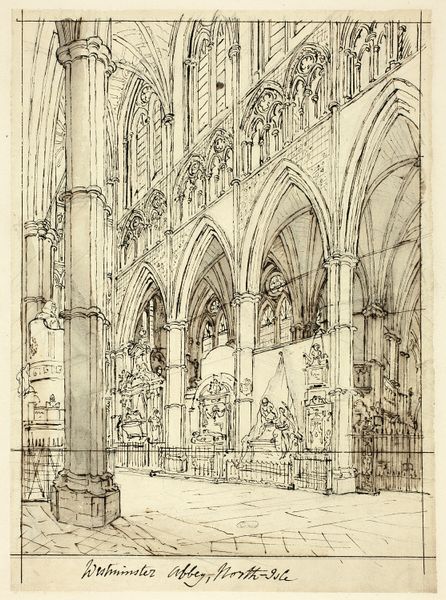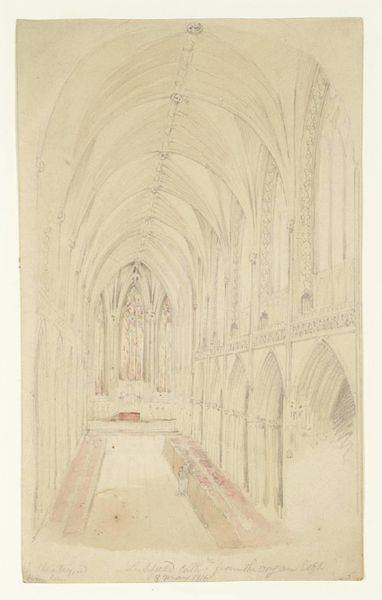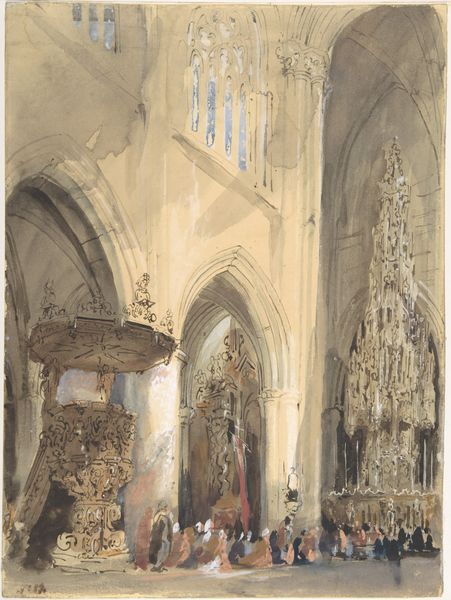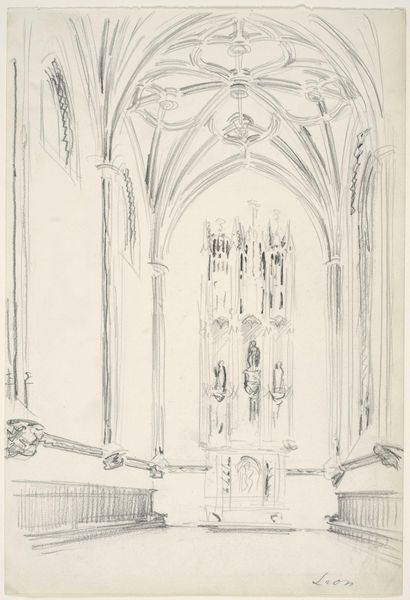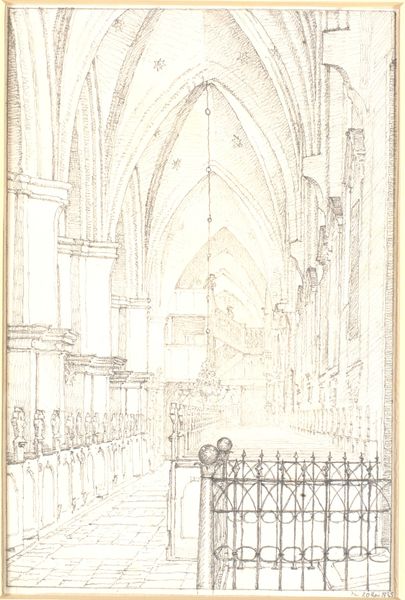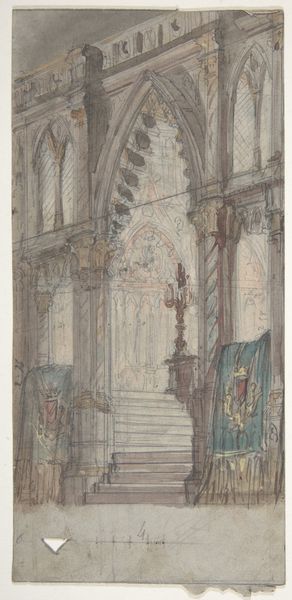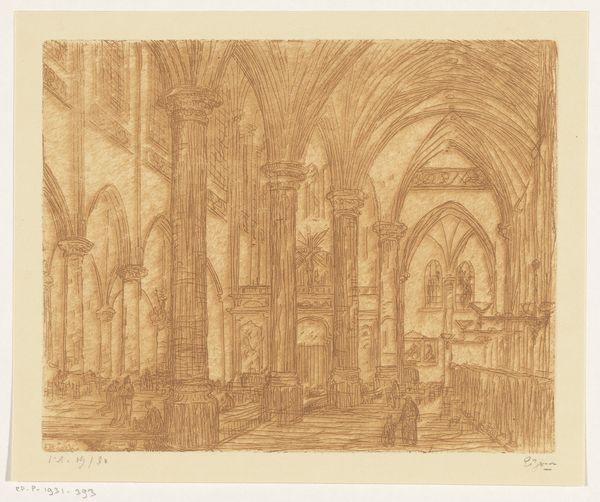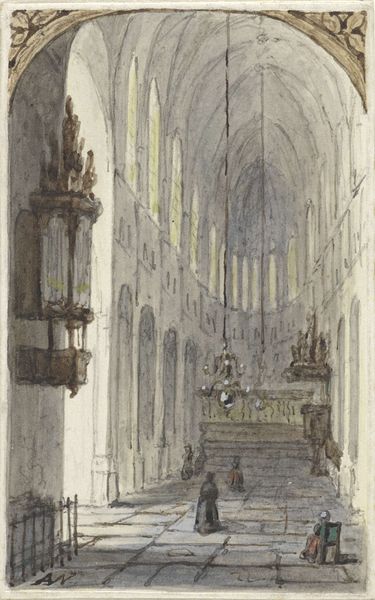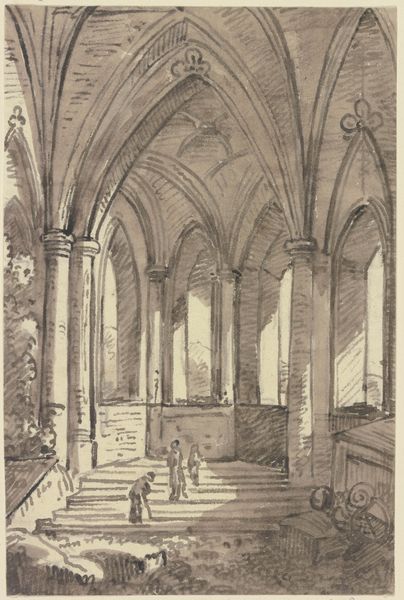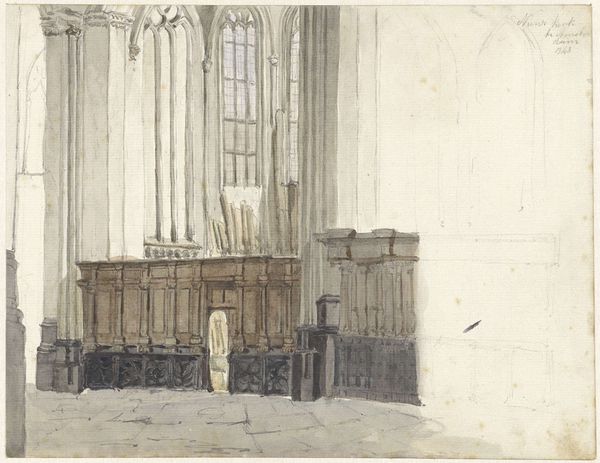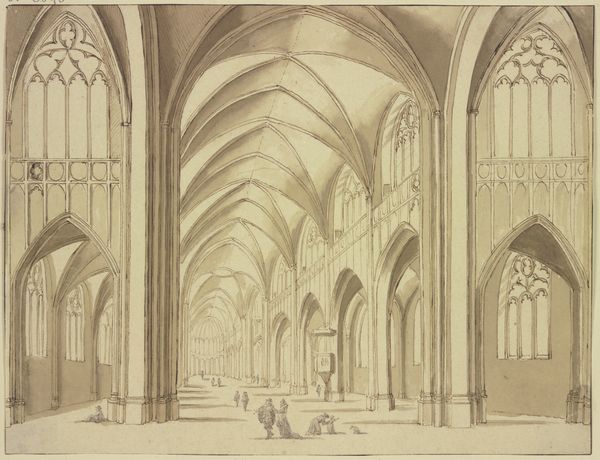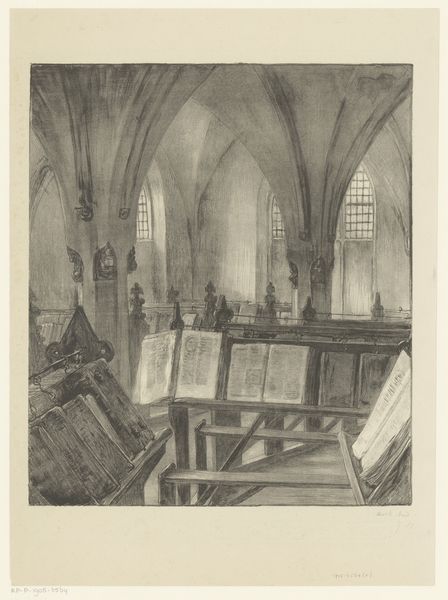
Dimensions: height 253 mm, width 253 mm
Copyright: Rijks Museum: Open Domain
Editor: So, this is Wilhelm Cornelis Bauer's "Interior of Notre Dame in Paris," created between 1872 and 1904. It's an ink and paper drawing. I’m immediately drawn to the contrast between the rigid architecture and the fluid lines of the drawing style, what do you make of this contrast? Curator: The contrast you point out speaks to the socio-economic shifts of the period. Consider the intense labor invested in the physical construction of Notre Dame itself, a structure representing immense power and religious authority. Now consider the relative ease and speed of Bauer capturing that essence through drawing. It becomes an exercise in understanding the deconstruction of traditional power through industrial means. Editor: Interesting. I see how the industrial context affects the way we perceive the cathedral. How does the materiality of the piece itself contribute to this interpretation? Curator: Ink on paper is readily reproducible, allowing for wider distribution of this image of power. Consider this alongside advancements in printmaking; Bauer's choice undermines the cathedral’s exclusivity and suggests a move toward democratizing access to iconic symbols. It almost renders it a commodity. Editor: So, the etching and the availability of paper transform a unique, impressive feat of architecture and craftmanship, something built by countless laborers, into something more commonplace? Curator: Precisely. And don't forget the implications for the art market itself. Works on paper become more accessible to a growing middle class, shifting patronage and ultimately the value system associated with art. It makes us think about who art is for, and how it gets to them. Editor: That makes a lot of sense. I never thought about the material's implications like that. This has definitely made me look at the drawing, and Notre Dame, in a whole new light! Curator: Indeed! It is often in considering the mundane reality of materials that larger truths emerge.
Comments
No comments
Be the first to comment and join the conversation on the ultimate creative platform.
